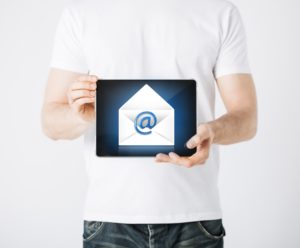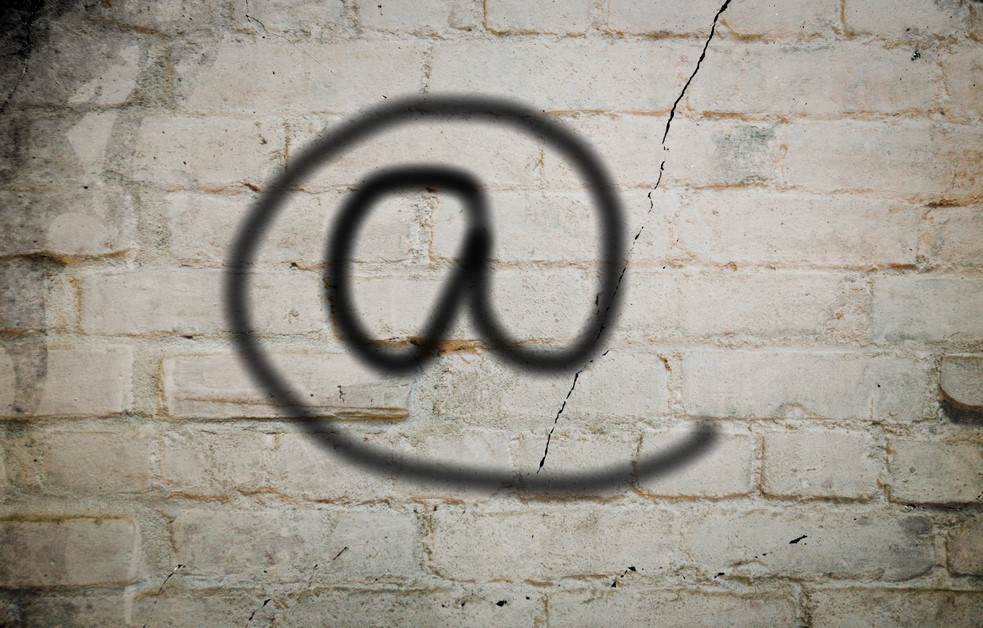Everyone wants to send an email that looks great and converts like crazy. It’s been proven that email marketing is an effective way to reach out to your customers. In fact, the return on investment of your email marketing is one of the highest in terms of marketing.
However, if your subject line is off, your copy is out of sync or any other part of your email isn’t right, your email campaign isn’t going to deliver the results you want. Let’s take a look at how to write more effective emails.
Click Here: Free Email Marketing Guide
5 Steps To Writing More Effective Emails
1.The Subject Line
Subject lines impact your open rates. The subject line is the most important part of your email since it’s what the subscriber first sees. It can grab their attention, making them want to immediately open and read. Or it can be the reason your emails end up in the trash.
Take your time creating a subject line. It can be difficult to condense all you want to say from your body copy into the short space allowed. Use one of these formulas if you need help crafting subject lines for effective emails:
- Ask a question. This formula is probably the easiest. Questions make them feel like you care about your recipient which makes them more emotionally attached to your brand.
Example: Apple asks, “Got plans for tonight?” - Use the “how-to” formula. People want to know how to solve their problems. They’re already searching the internet for the answers. You cut down their search time by offering the solutions in your email as how-to content.
Example: “How to increase your opt ins overnight” - Use scarcity to create a sense of urgency. This encourages readers to act quickly so they don’t miss out. The key is that the scarcity and /or the urgency must be real. Don’t mislead your reader by falsely claiming you only have xx slots left or hours remaining if you have more open spaces.
Example: “Act quickly while supplies last— the 50% discount ends tonight” - Surprise your readers. Give them something unexpected like a free gift or free content. Use the word ‘free’ sparingly and honestly. Giving something away makes your audience feel a sense of reciprocity for the gift and likely to want to return the favor, possibly by purchasing one of your paid services.
Example: “My gift especially for you” - Personalize your subject line. Include their first name in the subject line. Include words like “your” if it works better than their name.
Example: “Your visit to Bali” - Create curiosity. Curiosity makes them naturally want to interact with otherwise static content. It provokes your audience to engage with your brand. Example: “Do you remember your first time…?”
- Use Listicles or numbered lists. Using numbered lists is an easy way for readers to digest your content.
Example: “23 Reasons your social media isn’t getting seen” - Keep it short. With our attention spans shorter than ever, using brevity captures attention. Use 3 to 5 words to create a succinct subject line. And don’t yell. Capitalize the first word only.
Example: “We miss you.”
Still stumped on a good headline? You can use one of the many headline generators online to come up with a winning subject line. They include:
- Portent’s Idea Generator
- Hubspot’s Blog Topic Generator
- Tweak Your Biz Title Generator
2. Email Body
 The body is the main area of the email. It conveys your message.
The body is the main area of the email. It conveys your message.
The first line is called the preheader or the hook and it’s what shows up next to the preview of your email. It needs to draw the reader in, so they’re compelled to open your email and read more.
Once they open your email, they’ll scan the content to see if they’re interested in reading more. This is when your content and formatting structure needs to be set up right. It should have an easily scannable structure with headings, short paragraphs with concise copy and bold or italics to highlight important elements. And use bulleted lists to simplify more complex ideas.
The body of the text is the meat of the email. This is where you engage your reader. Get creative here. Even though the style is different for retailers, non-profits and service providers, the basic general guidelines work in every situation. The content should be about your subscribers. It should be about their problems, their feelings, lifestyles and of course, the solutions.
3. Call to Action
The call the action (CTA) is one of the most important sections of effective emails. It’s what gets subscribers to take the action you want them to take. People need to be told explicitly what you want them to do.
For example, if you’re sending an email that features your latest product, you need a button or link that tells your reader to buy it. Or if you want your readers to click on a link to your latest article, you need to tell them to.
In every email you send, you need a relevant CTA. It should focus on the action you want them to take. Use action-oriented text related to the action you desire them to take. Make your CTA legible and keep the text short. Place one above the fold and the other one near the bottom.
The design of your CTA can be a button or a different color text. It needs to be the appropriate size, meaning it can’t fit across the page. Use white space near the call to action to draw the reader’s eye to it.
4. Signature
Your signature is your chance to sell yourself. The average email signature has your name, maybe your title, some way to contact you and possibly your logo.
But if you want it to sell for you, your email signature needs to be optimized. Your signature can be a place where you can continue your sales conversation. Here is where you can make it interesting so that when the reader sees it. For example:
- Include a link to your blog. Boost your credibility and sell passively by including a link to your latest blog post.
- Add a link to your recent webinar recordings. Your readers will be curious to learn more about you, your products, or interviews you do.
- Link to positive and relevant case studies. Case studies add a huge amount of credibility for you. Potential customers get the opportunity to see the benefits and how your product is used from those actually using them.
- Add links to your social media channels. Use icons that represent each site’s logo instead of using long hyperlinked URLs.
At the very least your signature should identify who you are and what you do, your company and how to contact you. But by including links and other information about what’s going on in your business, you create another form of a call to action for the reader. It’s important to create a balanced design between the content, type and imagery. Make use of dividers and white space to separate different elements and direct the reader’s eye.
5. P.S.
The P.S. is the postscript. It’s the last little additional thought you add at the end of your letter or email. It’s a way to reiterate the call to action, provide bonus information or offer, or share a testimonial.
The P.S. is a way you can get a specific point in your email noticed. People tend to remember what’s at the beginning and end of text in your emails so including a P.S. is a great way to quickly reiterate what you want them to do.
Here some examples of how to use the P.S. for an effective email ending:
- Create a sense of urgency. It could be a deadline approaching, a limited number, or something else that gets readers to take action.
- Provide another CTA. Invite readers to take action by linking to your sales page or registration page.
- Add another thought to your email. This can be an extra thought that doesn’t quite fit into your main message or maybe a funny thought that makes your email stand out from other messages.
- Make connections. Invite readers to connect by adding links to your social media channels or subscribe to your side-content such as podcasts, videos, blog, etc.
- Share more value. Share discounts, previews, extra tips, testimonials from other customers, bonuses or anything else that is of value to the reader.
Free Guide To Writing Effective Emails
Sending emails to customers is still one of the most effective marketing strategies for successful modern businesses. But it has become a great deal more competitive in recent years, with savvy readers becoming more discerning about what they put down their email address for. No one likes spam, after all. And when you’re fighting for attention in a busy inbox, you have to make sure that your message not only stands out, but gets read and some action is taken. To learn more about the fundamentals of effective email marketing, download this Free Email Marketing Guide.


